Wingnut Wings Fokker Eindecker E-III Late
Another outstanding Wingnut Wings model kit. This one was built out of the box as nothing else but rigging is necessary on these kits. Rotary engines in WWI used castor oil as a lubricant introduced into the gas/air stream. It was not absorbed by the gasoline so it was ejected from the whirling engine's exhaust valves, liberally splattering everything. The cut at the bottom of the cowling was there to somewhat direct the oil spray to the underside of the aircraft but did not eliminate the fuselage, wings and undercarriage from becoming badly stained with oil over time. I replicated this by using oil paint of various oily colors thinned with turpenoid. With a matt coat on the flying surfaces, this mixture flowed and stained much like the original. I also used a stiff bristled brush dipped in the oily goo and flicked the bristles to splatter some areas too.
Turnbuckles were made from a soft plastic tubing used for fly tying and used for the wing attachment points. This is actually unsatisfactory since the tubing is flexible. Next time I will stay with brass or stainless tubing for this. The other turnbuckles were made from 0.005" brass tubing cut to length with a home made jig from and old contest acrylic plate trophy. Goes to show, contests can be good for modeling.
You will also notice that the port and starboard wings, and the rigging pylon, have color coded turnbuckles. The small stencils on the outboard of each wing are there to alert the ground crew as to which color turnbuckles go with which wing. This is a little known fact derived from Josef Scott's "Fokker Eindecker Compendium" vol's 1 and 2. I think these are the definitive sources for anything Eindecker.
Rigging was primarily 0.005" monofilament from fly fishing tippet spools colored with a Sharpie marker. I did use EZ Line and some steel wire in a couple of spots.
The wing ribs were emphasized by masking them off and spraying a very thin mix of red brown and black Tamiya acrylics over the ribs, then removing the tape. With a final dot filter 'wash' and matt coat, the effect was brought down into the more subtle arena and looks pretty good.
A fun build. I can continue to highly recommend Wingnut Wings WWI kits to anyone. You don't need a lot of experience to build these and the results are outstanding.
A full build review is available on the IPMS USA website.
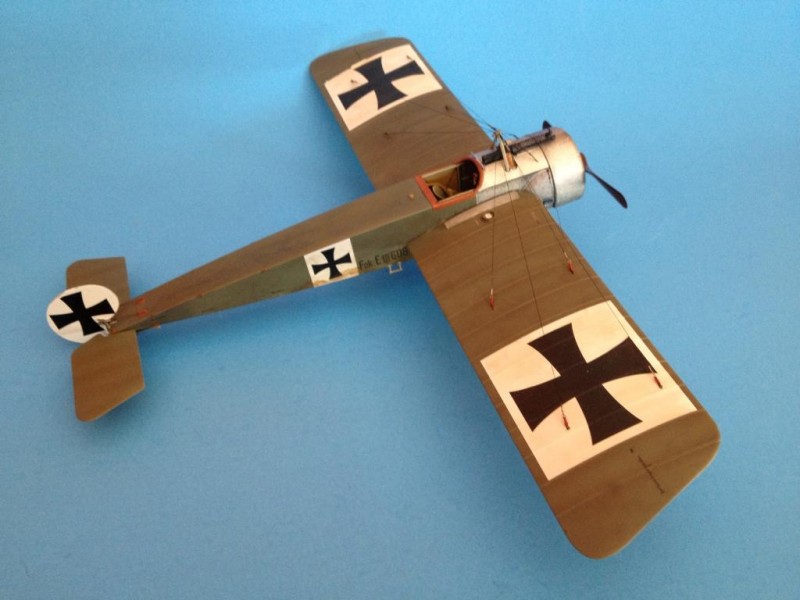
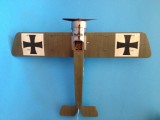
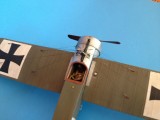
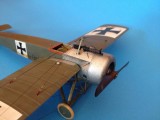
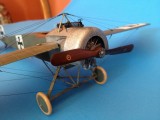
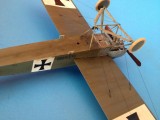

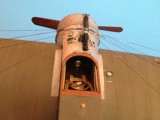

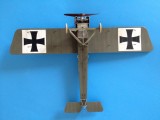
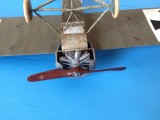

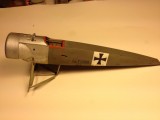
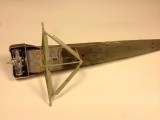
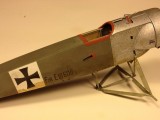
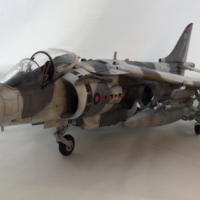
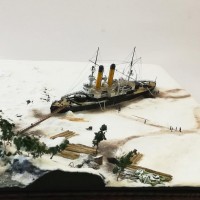
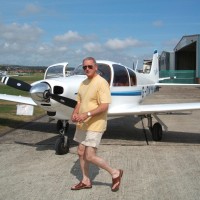
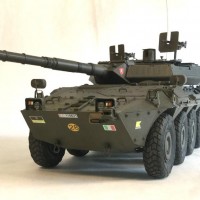
Amazing work on the 'engine turning' on the cowl and sides! How did you achieve it?
I wholeheartedly agree, that metal cowling is fantastic.
The full details are in the IPMS review article on their website, part 1. But, the final treatment was to spray Model Master Non-Buffing aluminum, then, after it had thoroughly dried, I painstakingly laid the swirls on with a #2 lead mechanical pencil. I think next time I will follow the patterns on the originals more closely, or use a teeny brush to lay down somewhat darker swirls. Glad you like it.
"I wholeheartedly agree, that metal cowling is fantastic."
I am too. Super!
Good job. +10
Vlad.